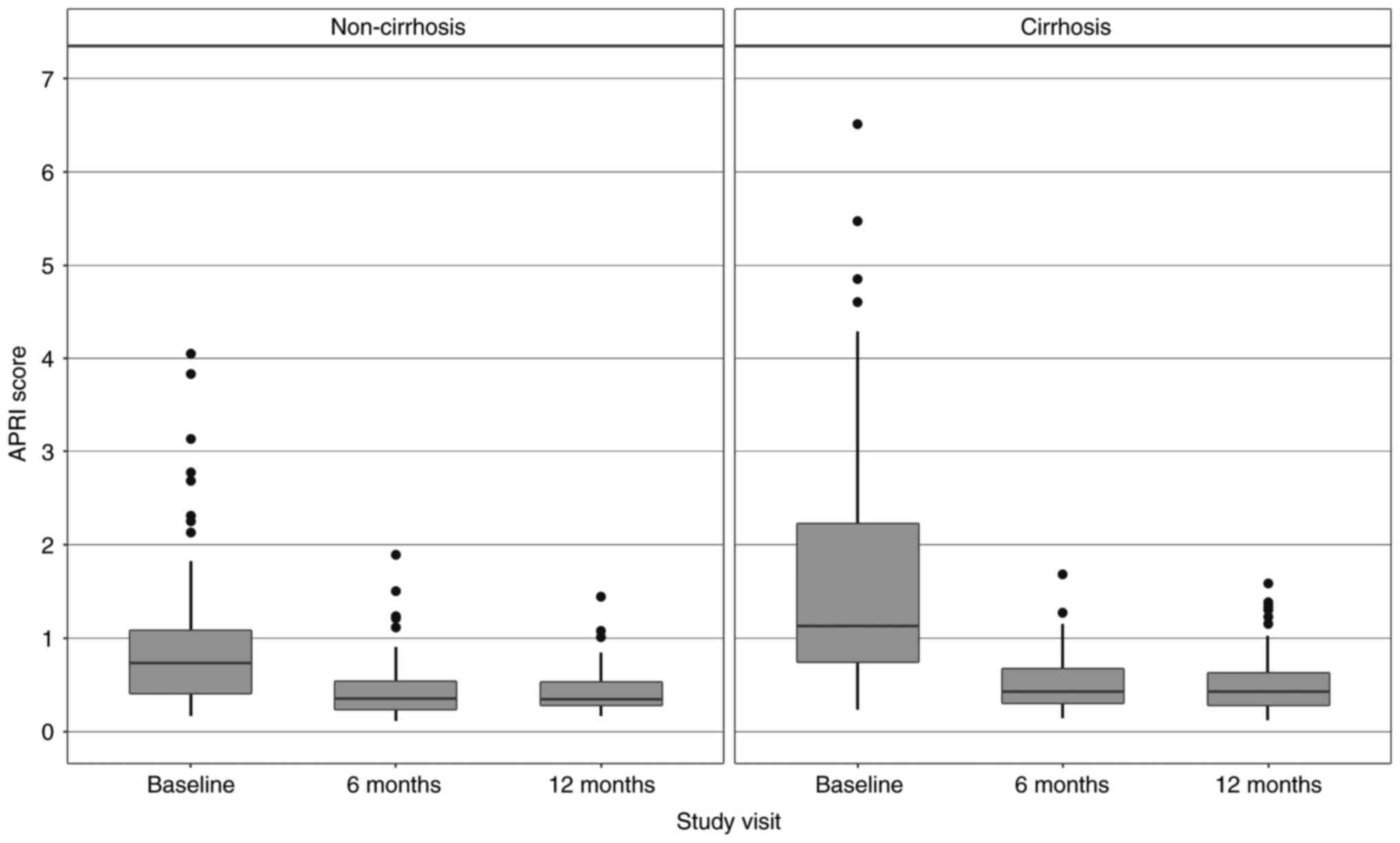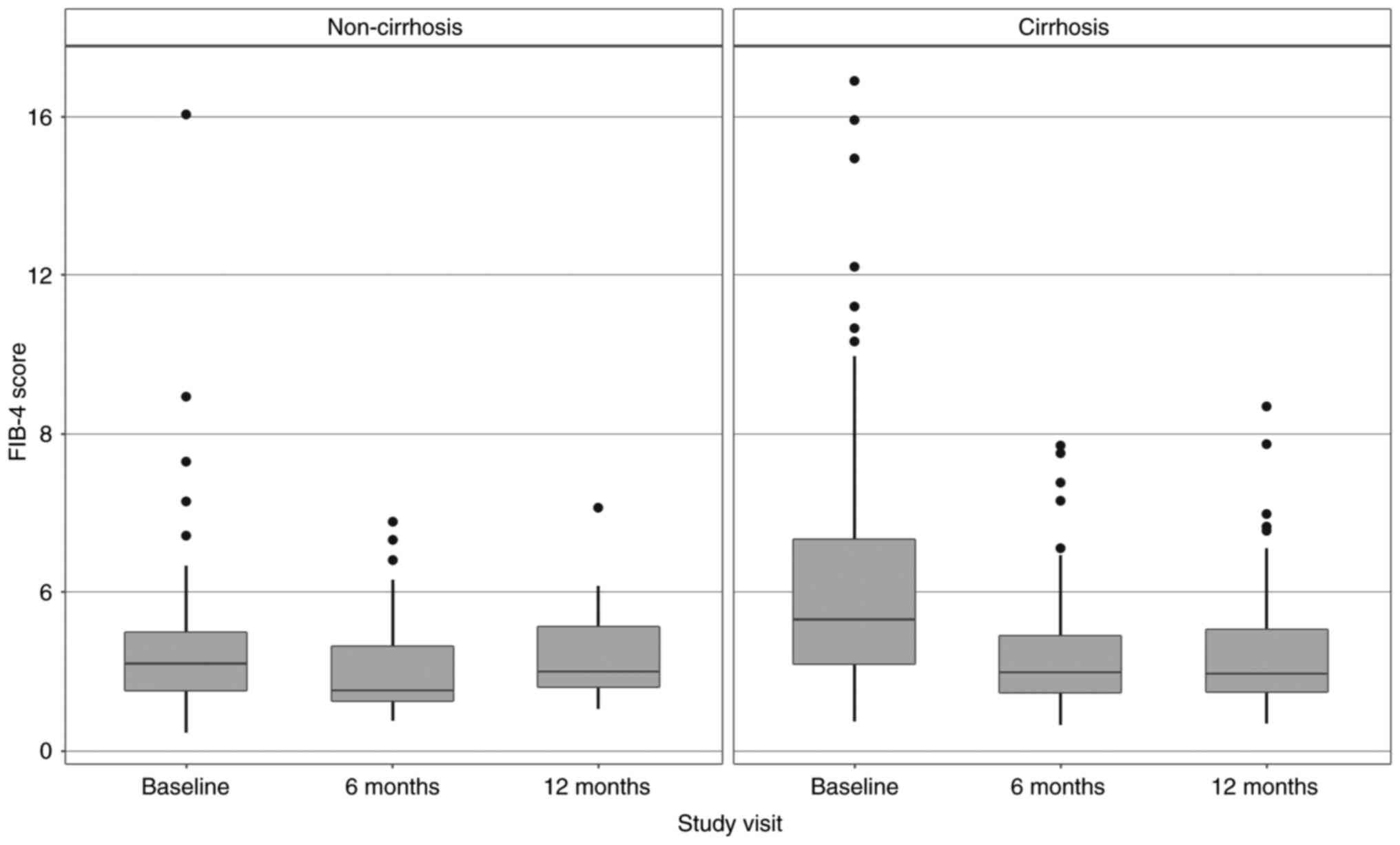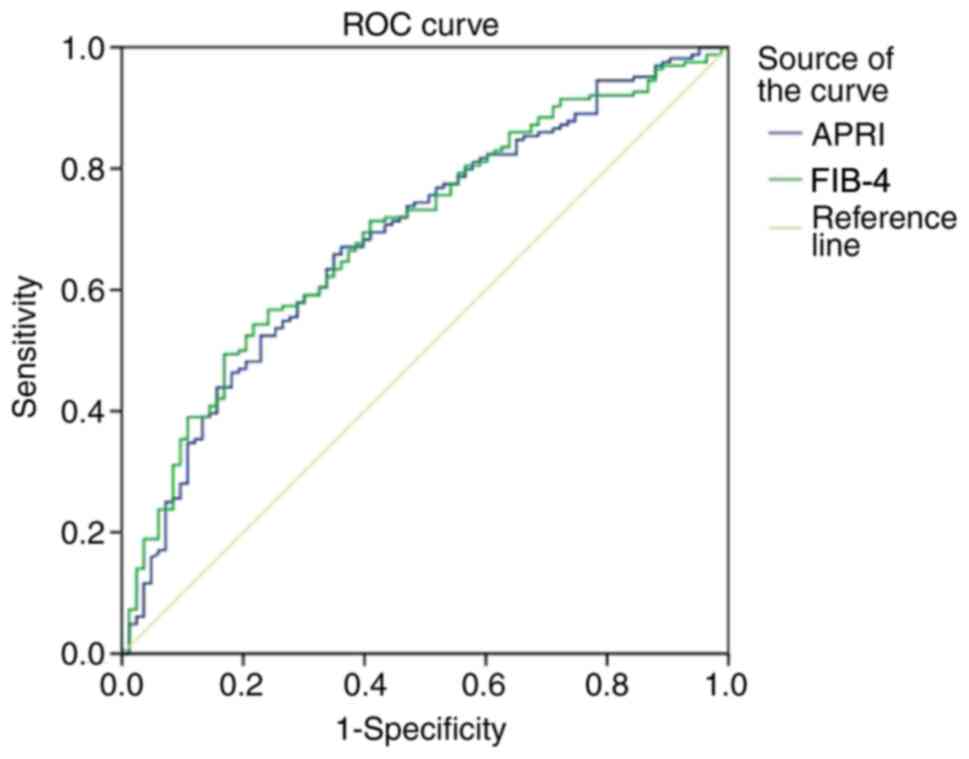|
1
|
Popescu C, Stratan L, Catană R, Leuștean
A, Dragomirescu C, Badea A, Murariu C, Năstase R, Molagic V, Aramă
V, et al: The efficacy of Ombitasvir-paritaprevir/ritonavir,
dasabuvir and ribavirin in patients with genotype 1 HCV compensated
cirrhosis. The 12th Edition of the Scientific Days of the National
Institute for Infectious Diseases “Prof. Dr. Matei Bals” and the
12th National Infectious Diseases Conference. BMC Infectious
Diseases. 16:31–76. 2016.10.1186/s12879-016-1877-4.
|
|
2
|
Aramă V, Leuştean A, Catană R, Stratan L,
Nastase RM, Molagic V, Radulescu M, Munteanu DI, Tiliscan C, Orfanu
A, et al: The efficacy of OBV/PTV/r + DSV and RBV in a Romanian
cohort with genotype 1 HCV compensated cirrhosis. Poster
presentation at the 26th Annual Conference of APASL, Shanghai,
China. Hepatol Int. 11 (Suppl 1)(S1028 (PP1765))2017.
|
|
3
|
Poordad F, Hezode C, Trinh S1028R, Kowdley
KV, Zeuzem S, Agarwal K, Shiffman ML, Wedemeyer H, Berg T, Yoshida
EM, et al: ABT-450/r-ombitasvir and dasabuvir with ribavirin for
hepatitis C with cirrhosis. N Engl J Med. 370:1973–1982.
2014.PubMed/NCBI View Article : Google Scholar
|
|
4
|
Poynard T, Imbert-Bismut F, Munteanu M,
Messous D, Myers RP, Thabut D, Ratziu V, Mercadier A, Benhamou Y
and Hainque B: Overview of the diagnostic value of biochemical
markers of liver fibrosis (FibroTest, HCV FibroSure) and necrosis
(ActiTest) in patients with chronic hepatitis C. Comp Hepatol.
3(8)2004.PubMed/NCBI View Article : Google Scholar
|
|
5
|
Cadranel JF, Rufat P and Degos F:
Practices of liver biopsy in France: Results of a prospective
nationwide survey. For the group of epidemiology of the French
Association for the study of the liver (AFEF). Hepatology.
32:477–481. 2000.PubMed/NCBI View Article : Google Scholar
|
|
6
|
Regev A, Berho M, Jeffers LJ, Milikowski
C, Molina EG, Pyrsopoulos NT, Feng ZZ, Reddy KR and Schiff ER:
Sampling error and intraobserver variation in liver biopsy in
patients with chronic HCV infection. Am J Gastroenterol.
97:2614–2618. 2002.PubMed/NCBI View Article : Google Scholar
|
|
7
|
Bedossa P, Dargère D and Paradis V:
Sampling variability of liver fibrosis in chronic hepatitis C.
Hepatology. 38:1449–1457. 2003.PubMed/NCBI View Article : Google Scholar
|
|
8
|
Ferraioli G, Tinelli C, Dal Bello B,
Zicchetti M, Lissandrin R, Filice G, Filice C, Above E, Barbarini
G, Brunetti E, et al: Performance of liver stiffness measurements
by transient elastography in chronic hepatitis. World J
Gastroenterol. 19:49–56. 2013.PubMed/NCBI View Article : Google Scholar
|
|
9
|
Poynard T, Munteanu M, Imbert-Bismut F,
Charlotte F, Thabut D, Le Calvez S, Messous D, Thibault V, Benhamou
Y, Moussalli J and Ratziu V: Prospective analysis of discordant
results between biochemical markers and biopsy in patients with
chronic hepatitis C. Clin Chem. 50:1344–1355. 2004.PubMed/NCBI View Article : Google Scholar
|
|
10
|
Wai CT, Greenson JK, Fontana RJ,
Kalbfleisch JD, Marrero JA, Conjeevaram HS and Lok AS: A simple
noninvasive index can predict both significant fibrosis and
cirrhosis in patients with chronic hepatitis C. Hepatology.
38:518–526. 2003.PubMed/NCBI View Article : Google Scholar
|
|
11
|
Sterling RK, Lissen E, Clumeck N, Sola R,
Correa MC, Montaner J, S Sulkowski M, Torriani FJ, Dieterich DT,
Thomas DL, et al: Development of a simple noninvasive index to
predict significant fibrosis patients with HIV/HCV coinfection.
Hepatology. 43:1317–1325. 2006.PubMed/NCBI View Article : Google Scholar
|
|
12
|
Zubair I and Wajid B: Comparison of APRI,
FIB-4 and fibro test in prediction of fibrosis and cirrhosis in
patients with hepatitis C. 2018 15th International Bhurban
Conference on Applied Sciences and Technology (IBCAST), Islamabad,
pp222-227, 2018.
|
|
13
|
Chou R and Wasson N: Blood tests to
diagnose fibrosis or cirrhosis in patients with chronic hepatitis C
virus infection: A systematic review. Ann Intern Med. 158:807–820.
2013.PubMed/NCBI View Article : Google Scholar
|
|
14
|
Vallet-Pichard A, Mallet V, Nalpas B,
Verkarre V, Nalpas A, Dhalluin-Venier V, Fontaine H and Pol S:
FIB-4: An inexpensive and accurate marker of fibrosis in HCV
infection. Comparison with liver biopsy and fibrotest. Hepatology.
46:32–36. 2007.PubMed/NCBI View Article : Google Scholar
|
|
15
|
Poynard T, Ngo Y, Perazzo H, Munteanu M,
Lebray P, Moussalli J, Thabut D, Benhamou Y and Ratziu V:
Prognostic value of liver fibrosis biomarkers: A meta-analysis.
Gastroenterol Hepatol. 7:445–454. 2011.PubMed/NCBI
|
|
16
|
Bachofner JA, Valli PV, Kröger A, Bergamin
I, Künzler P, Baserga A, Braun D, Seifert B, Moncsek A, Fehr J, et
al: Direct antiviral agent treatment of chronic hepatitis C results
in rapid regression of transient elastography and fibrosis markers
fibrosis-4 score and aspartate aminotransferase-platelet ratio
index. Liver Int. 37:369–376. 2017.PubMed/NCBI View Article : Google Scholar
|
|
17
|
Tamaki N, Kurosaki M, Tanaka K, Suzuki Y,
Hoshioka Y, Kato T, Yasui Y, Hosokawa T, Ueda K, Tsuchiya K, et al:
Noninvasive estimation of fibrosis progression overtime using the
FIB-4 index in chronic hepatitis C. J Viral Hepat. 20:72–76.
2013.PubMed/NCBI View Article : Google Scholar
|
|
18
|
Houot M, Ngo Y, Munteanu M, Marque S and
Poynard T: Systematic review with meta-analysis: Direct comparisons
of biomarkers for the diagnosis of fibrosis in chronic hepatitis C
and B. Aliment Pharmacol Ther. 43:16–29. 2016.PubMed/NCBI View Article : Google Scholar
|
|
19
|
Cepeda JA, Solomon SS, Srikrishnan AK,
Nandagopal P, Balakrishnan P, Kumar MS, Thomas DL, Sulkowski MS and
Mehta SH: Serum fibrosis markers for the diagnosis of liver disease
among people with chronic hepatitis C in Chennai, India. Open Forum
Infect Dis. 3(ofw156)2016.PubMed/NCBI View Article : Google Scholar
|
|
20
|
Amorim TG, Staub GJ, Lazzarotto C, Silva
AP, Manes J, Ferronato Mda G, Shiozawa MB, Narciso-Schiavon JL,
Dantas-Correa EB and Schiavon Lde L: Validation and comparison of
simple noninvasive models for the prediction of liver fibrosis in
chronic hepatitis C. Ann Hepatol. 11:855–861. 2012.PubMed/NCBI
|


















